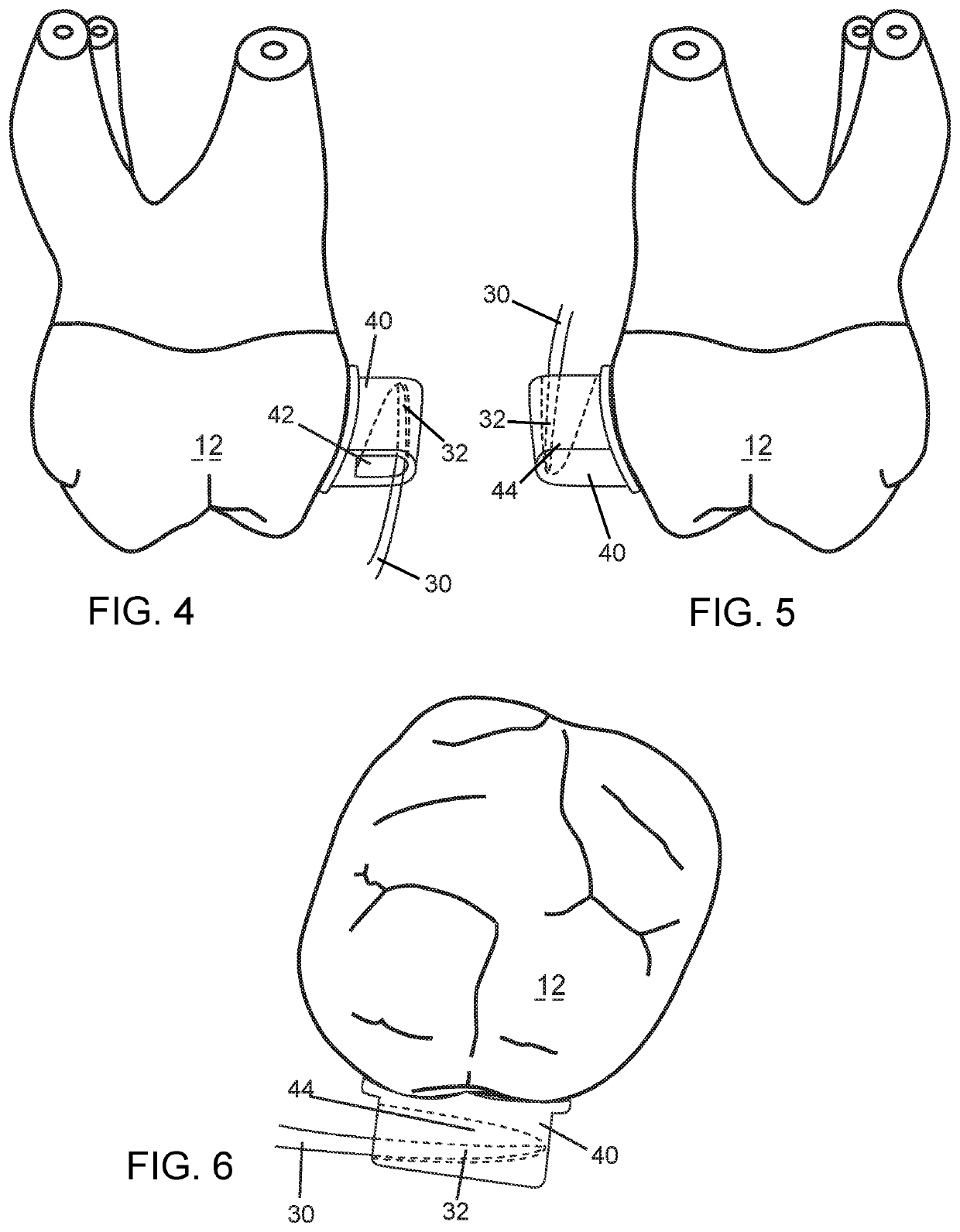Orthodontic bracket with sliding molar distalizer
a technology of sliding molars and brackets, which is applied in the direction of brackets, arch wires, etc., can solve the problems cumbersome external headgear wear, and difficult assembly, so as to reduce the effect of catching on the inside of the patient's cheek
- Summary
- Abstract
- Description
- Claims
- Application Information
AI Technical Summary
Benefits of technology
Problems solved by technology
Method used
Image
Examples
Embodiment Construction
[0043]With reference to FIG. 1 to FIG. 6, a sliding distalizer is provided. The sliding distalizer comprises an angled rhomboid or rectangular-shaped attachment bracket 20 affixed to a canine tooth 10. The attachment bracket 20 has a ball hook 22, to attach a separate traction force elastic (not shown) to a lower molar at a diagonal in order to exert force on the attachment bracket 20. The ball hook 22 is smooth in order to reduce catching of the hook 22 on the inside of the patient's cheek. The attachment bracket 20 may be integrally formed at, or attached to, a portion of a long rod 30 that extends towards the back of the mouth in a mesiodistal direction. The rod 30 is slightly curved in the buccal-lingual plane, but relatively straight in the gingival-occlusal plane. The rod 30 enters an upper molar tube 40, affixed to a molar tooth 12, via a wide opening 42 on a mesial side, more clearly shown in FIG. 4 to FIG. 6. The upper molar tube 40 may be shaped so that opening 42 is gener...
PUM
 Login to View More
Login to View More Abstract
Description
Claims
Application Information
 Login to View More
Login to View More - R&D
- Intellectual Property
- Life Sciences
- Materials
- Tech Scout
- Unparalleled Data Quality
- Higher Quality Content
- 60% Fewer Hallucinations
Browse by: Latest US Patents, China's latest patents, Technical Efficacy Thesaurus, Application Domain, Technology Topic, Popular Technical Reports.
© 2025 PatSnap. All rights reserved.Legal|Privacy policy|Modern Slavery Act Transparency Statement|Sitemap|About US| Contact US: help@patsnap.com



